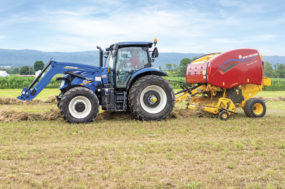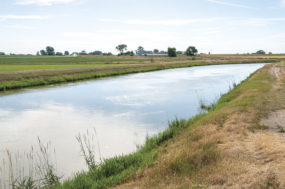Ray Prock dairy farms in the Central Valley and has a hay ranch in the Oregon Klamath Valley on the California border. “On our California ranch we receive water from Turlock Irrigation District, which stores winter snow runoff in a reservoir to be used for irrigation,” says Prock. “In a normal year we are allotted 48-acre inches of water. In other words, you cover an acre with 48 inches of water. In recent years, we have been allotted a reduced level of around 30-36 inches of water. This year the prediction, if we receive normal precipitation from here forward, is an allotment of 20 inches.”
Prock’s situation is similar to many crop and forage producers in the California valleys. Since most of their moisture comes from surface irrigation, many landowners are looking at the options digging wells or selecting plant varieties with lower water requirements to salvage 2014 crops.
The long-term drought has also resulted in several sell-offs for livestock owners in recent months for producers who depend on forage supplies as their major feed source. Cattle and sheep numbers have been reduced by half or more in some areas, with many producers contemplating complete dispersal. FG
Ryan Goodman
Communications Manager
Montana Stockgrowers Association










